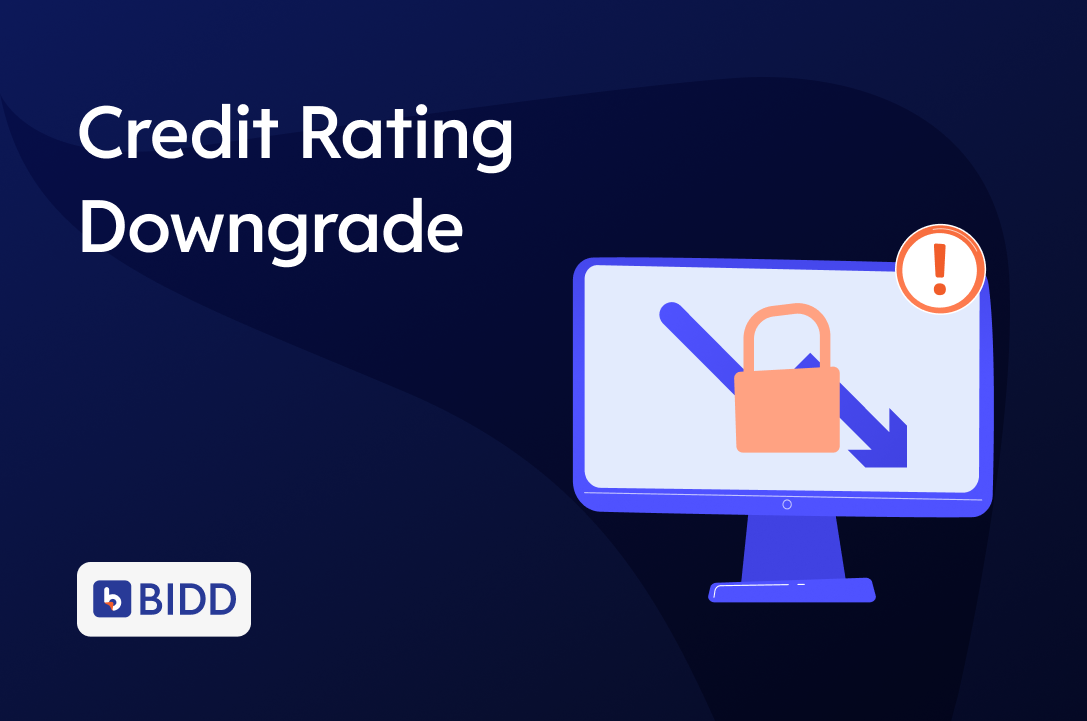Let’s Start with a Quick Question:
You bought a bond.
Good coupon. Trusted issuer. Everything seemed fine.
Then one day you get a message:
“Rating downgraded from AA to BBB.”
What does this actually mean?
Should you panic? Should you sell?
Is your investment in trouble?
Let’s decode.
What Is a Credit Rating?
A credit rating is like a report card for the bond issuer.
It tells you how likely they are to repay the money they’ve borrowed — on time and in full.
Here’s how typical ratings work:
| Rating | What It Means |
| AAA | Exceptional, least risk |
| AA | Very strong |
| A | Strong, but some sensitivity |
| BBB | Moderate risk (still investment grade) |
| BB & Below | High risk, speculative (junk) |
Ratings are issued by agencies like CRISIL, ICRA, CARE, and India Ratings, based on financial strength, debt levels, industry outlook, and more.
What Is a Downgrade?
A downgrade means the rating agency has lowered its view of the issuer’s ability to repay.
It doesn’t mean the bond has defaulted. But it does mean risk has gone up.
Reasons for a downgrade may include:
- Weakening financials (profits, revenue decline)
- Rising debt levels
- Negative outlook for the sector
- Delayed or failed projects
- Changes in promoter or governance issues
What Happens to Your Bond?
The bond doesn’t disappear, and your rights remain.
You still receive your interest (coupon) payments.
And, unless the issuer defaults, you will still receive your principal at maturity.
But a downgrade does change your position in the market.
1. Market Value Drops
A lower rating signals more risk, which makes the bond less attractive to other buyers.
If you try to sell before maturity, you might have to sell at a discount.
Example:
- Before downgrade (AA): Bond priced at ₹102
- After downgrade (BBB): Price drops to ₹94
- That’s a capital loss of ₹8 per ₹100, even if the issuer pays on time.
2. Liquidity Becomes Tighter
Fewer buyers want downgraded bonds.
Demand drops.
You may see fewer bids or no buyers on platforms.
Selling becomes harder — and you may have to accept a lower price.
3. Risk of Default Increases
A downgrade doesn’t guarantee default — but it increases the probability.
It can also be the first of several downgrades.
Once a bond slips below BBB-, it enters junk territory.
Real-Life Example
Bond X
- Coupon: 9.5%
- Issuer: Large real estate company
- Original rating: A
Six months later:
- Downgraded to BBB- due to delayed project launches and weak cash flows
- Bond price dropped
- Liquidity dried up
- Exit became costly
So, What Should You Do?
1. Stay Calm
A downgrade is a signal, not a verdict. Don’t rush to sell.
2. Check the New Rating
Is it still investment grade (BBB- or above)?
Or has it fallen into speculative territory?
3. Review the Issuer’s Situation
Look at the rating agency’s downgrade note (often public).
Is the issue temporary — or structural and long-term?
4. Talk to Your Advisor
They can assess whether the bond still fits your goals or if it’s better to exit.
Can You Avoid This?
Not entirely. Even highly-rated bonds can be downgraded.
But you can reduce the risk by doing the following before investing:
- Check credit rating and issuer history
- Look at the issuer’s financials and debt levels
- Prefer secured bonds with tangible backing
- Don’t chase unusually high yields — risk is often hidden in them
Quick Recap: Impact of a Downgrade
| Factor | What Changes |
| Market Price | Usually falls |
| Liquidity | Becomes tighter |
| Risk Level | Increases |
| Default Risk | Rises (but not guaranteed) |
Final Thoughts
In the bond market, credit rating is your early warning system.
A downgrade isn’t the end — but it’s a clear sign to reassess.
So next time you hear:
“The bond has been downgraded”
Don’t hit the panic button.
Instead, ask:
- Is the bond still within investment grade?
- Can I afford to hold till maturity?
- Has the issuer’s long-term story changed?
- Do I need to realign my portfolio?
Because smart investing is not just about what you buy — it’s about what you track, review, and respond to.
Stay informed. Stay balanced.
Be that investor.
Disclaimer: This blog is intended solely for educational and informational purposes. It should not be construed as investment advice, a recommendation, or an offer to buy or sell any financial products. Please consult a registered financial advisor before making any investment decisions.




